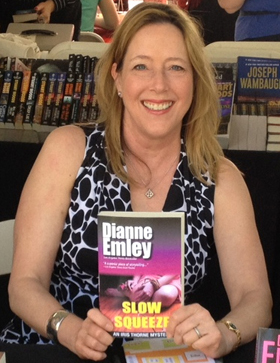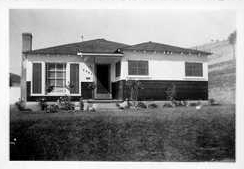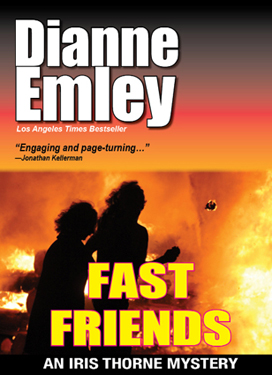 Thank you Elizabeth for again letting me contribute to your blog. This is my third posting about my experiences revisiting the five books in my Iris Thorne Mysteries series that was originally published by Simon and Schuster during the 1990s and have been out-of-print. I’ve gently edited all the Iris Thornes and am releasing them for the first time as e-books and trade paperbacks.
Thank you Elizabeth for again letting me contribute to your blog. This is my third posting about my experiences revisiting the five books in my Iris Thorne Mysteries series that was originally published by Simon and Schuster during the 1990s and have been out-of-print. I’ve gently edited all the Iris Thornes and am releasing them for the first time as e-books and trade paperbacks.
Today I’m discussing Fast Friends, the third Iris Thorne mystery, which is again on-sale. In the fall, Foolproof, Iris #4, will be rereleased. The fifth and final Iris Thorne, Pushover, never before published in the U.S., will be out in 2013. The primped and polished first two Irises, Cold Call and Slow Squeeze, are available now.
Fast Friends is my most personal book so far. It was originally published in 1997 and I wrote it from 1994 to 1995. It was inspired by pivotal events in my life at that time, events that shook me (sometimes literally) to the core and that inspired me to take a look back at who I was once upon a time, where I came from, and how far I’ve come since.
While I was writing Slow Squeeze, the second Iris Thorne Mystery, a dear friend who I’d been close with since the third grade died suddenly at thirty-eight after a brief illness. Laura was a larger-than-life figure for me. She was bold and brash and never minced words. She flew fast and wild while I was more measured and careful. She had big plans for her life and achieved many of them. I’m tall but she was taller, with lush dark brown hair, dark brown eyes, and a pretty yet strong face. Although we were the same age and very much fast friends, I looked up to her like an older sister and often sought her advice. Like sisters, we got into spats—some involved yelling–but that was Laura and that was me back then too.
Laura’s passing made me think a great deal about friendship, especially about the friends we make as children and how sometimes those friendships transition only with difficulty into adulthood. Laura and I had made the transition, even though we grew in different directions and there were periods during which we didn’t speak regularly. The bond didn’t fade with time and distance. Whenever we next spoke or saw each other, we picked up right where we left off.
 |
|
The house where Dianne and Laura played, |
When we were fourteen, her family moved from our hardscrabble Northeast L.A. neighborhood to a sedate suburb thirty miles away. We wrote letters, talked on the phone, and I spent summer weeks at her house. The years before she moved, we saw each other daily in class and spent many hours at each others’ homes. Those years coincided with a troubling period in my life and Laura and her parents provided a much-needed refuge for me.
During my childhood, I had close contact with someone who had a nervous breakdown, as it was called in the 1960s. This was manifested in wild, frightening, and sometimes dangerous delusions and behaviors. I was an unwilling participant in some of these paranoid, schizoid episodes. I remember looking into this person’s eyes, like Iris Thorne looks into Dolly DeLacey’s in Fast Friends, and seeing insanity. I’ll never forget it.
Ultimately, this individual was briefly committed to a mental hospital and underwent electroshock therapy, as happened to Dolly in the book. Shock therapy has been humanized since then but it was brutal in the 1960s. The description in Ken Kesey’s One Flew Over the Cuckoo’s Nest nails it. After this person returned home, there were no further psychotic episodes. Things were eerily calm yet still far from normal. Life continued on tenterhooks.
I’m not a person who dwells in the past. I spent my young adult years trying to distance myself from my history and spent little time thinking about the traumatic events that occurred when I was a young teenager. But after Laura died, I was drawn back to that period of my life. It was a story that I now felt compelled to tell.
 A real-time catastrophe–the Northridge earthquake of 1994–happened while I was writing Fast Friends. The unpredictable nature of quakes makes them especially frightening but it also opens up a world of criminal possibilities. I started thinking…. What if someone commits a murder and carefully arranges the scene to frame someone, only to have the frame-up thwarted by an earthquake?
A real-time catastrophe–the Northridge earthquake of 1994–happened while I was writing Fast Friends. The unpredictable nature of quakes makes them especially frightening but it also opens up a world of criminal possibilities. I started thinking…. What if someone commits a murder and carefully arranges the scene to frame someone, only to have the frame-up thwarted by an earthquake?
The core of Fast Friends takes place in 1971 when Iris Thorne was fourteen and her family is undergoing a crisis. Iris’s family–her father Les, mother Rose, and older sister Lily–make their first appearances. I thought it was time. I didn’t want Iris to exist in a void. She’s very much a product of her background. The novel is set in the hilly, lower-middle-class Northeast Los Angeles neighborhood where Iris (and Laura and I) grew up.
Next door to the Thorne’s modest home is a ranch belonging to the DeLacey family. Wayward Paula DeLacey, who was inspired by my friend Laura, is Iris’s best friend. The focus of the DeLacey family is mentally ill wife and mother Dolly—tragic yet heroic in her own way. Each family member responds differently to Dolly’s illness. Some manipulate it for their own ends. Paula is angry at her mother for her bouts of insanity but fearful that she’s inherited “the crazy gene.”
The story is bookended by two major earthquakes. In the early morning of the big San Fernando earthquake in 1971, the dramas being played out in the Thorne and DeLacey families collide–resulting in a murder that will remain unsolved for over twenty years until the 1994 Northridge quake reveals long hidden secrets. I was living in Los Angeles during both those earthquakes, experiences I’ll never forget and that are too crazy to not fold into my fiction.
Fast Friends is the story of old rivalries, family dynamics, local politics, and murder. It’s also about the enduring quality of friendship and coming to terms with childhood traumas from the safe haven of adulthood. Thanks, Laura.

 )
)




Charles Wingfield
May 9, 2012 - 8:06 PM